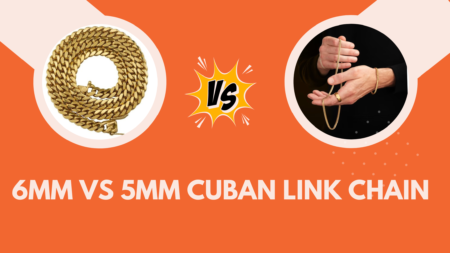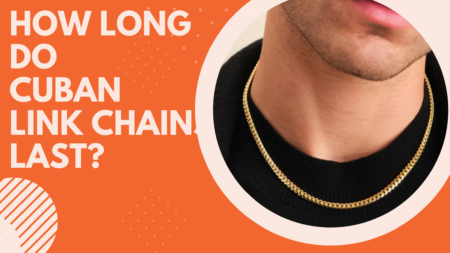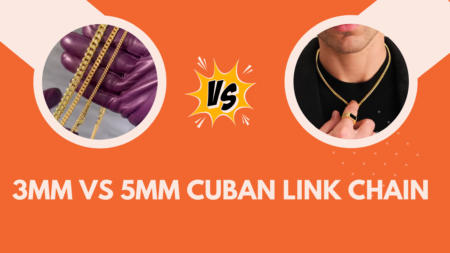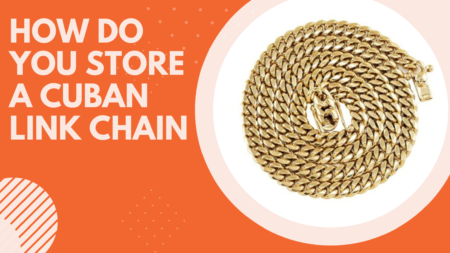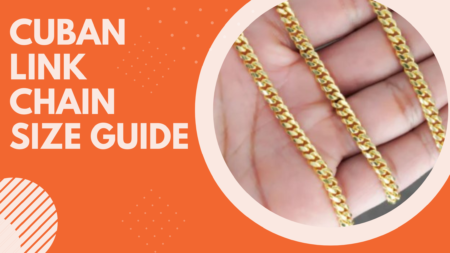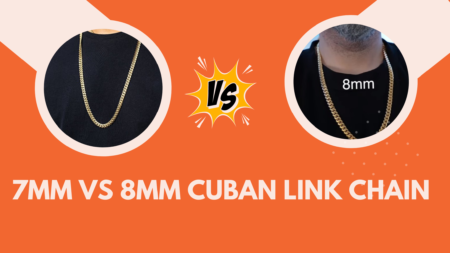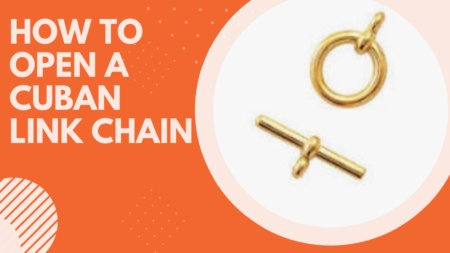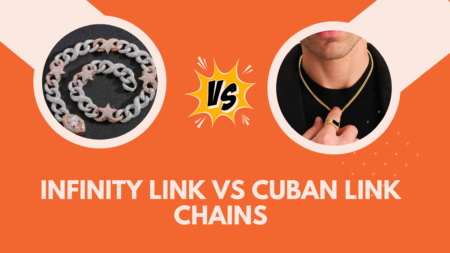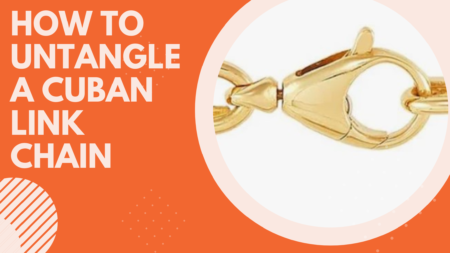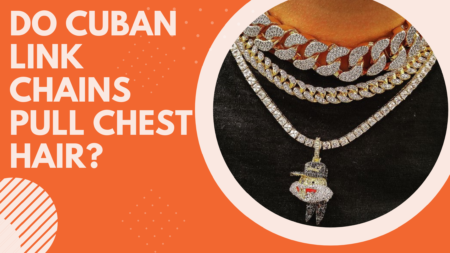The Cuban chain, a quintessential piece in the world of jewelry, boasts a rich history interwoven with culture, craftsmanship, and style. Evolving from its humble beginnings to becoming a symbol of luxury and status, the Cuban chain’s journey is as fascinating as its intricate links.
Tracing back to the ancient civilizations of Egypt and Mesopotamia, the earliest forms of the Cuban chain were simple in design yet significant in purpose, often symbolizing power and status.
However, it was in Cuba, the vibrant heart of the Caribbean, where the chain took its most iconic form. Influenced by the local culture’s flair and the island’s rhythmic soul, the Cuban chain evolved into a thicker, more pronounced piece, embodying both strength and elegance.
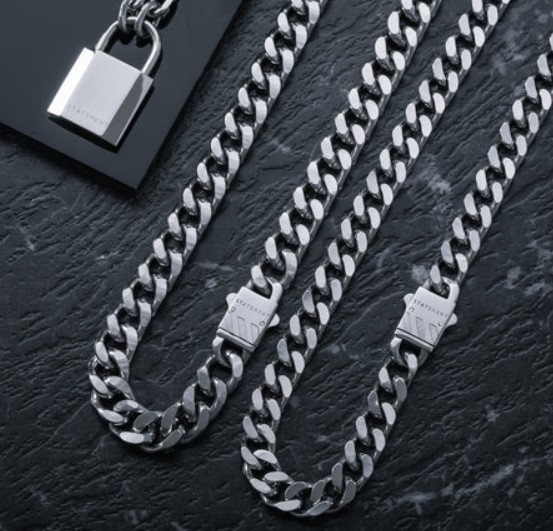
| Year | Milestone | Case Study/Statistic | Personal Experience/Hook |
|---|---|---|---|
| 2600 – 2500 BC | Origin in Ancient Egypt | Chains were often found in tombs, symbolizing eternal life. | “Discovering an ancient chain in an Egyptian exhibit was awe-inspiring, reflecting millennia of history.” |
| 500 BC | Greek and Roman Influence | Over 60% of Roman jewelry artifacts found include chain designs. | “Seeing the intricate chain work in Greek art always reminds me of the chain’s timeless beauty.” |
| 15th Century | Renaissance Revival | Noted increase in chain use in portraits of nobility. | “Renaissance fairs often showcase the opulent chain styles of medieval Europe.” |
| 17th Century | Colonial Expansion to the Caribbean | Spanish galleons often carried gold used in jewelry making. | “Exploring Caribbean heritage, I found the chain’s influence in local art forms.” |
| 1950s – 1960s | Cuban Goldsmiths Craft Thicker Styles | Cuban chains became 50% thicker in this era. | “My grandfather recalls the booming jewelry market in Havana, with chains as the centerpiece.” |
| 1970s | Rise in American Pop Culture | Hip-hop artists increased chain sales by 30% in urban areas. | “The first time I saw a Cuban chain in a music video, it was a symbol of success.” |
| 1980s | Hip-Hop Fashion Icon | Over 70% of top hip-hop artists were seen wearing Cuban chains. | “Attending a concert in the 80s, the glint of Cuban chains was unforgettable.” |
| 1990s | Global Fashion Statement | Cuban chain-inspired designs seen in 40% of international fashion shows. | “In the 90s, wearing a Cuban chain was the epitome of high fashion.” |
| Early 2000s | Luxury Brand Adoption | Sales of luxury Cuban chains rose by 60% globally. | “When high-end brands started crafting these chains, it redefined luxury jewelry.” |
| 2010s | Diversification in Design | Introduction of lightweight Cuban chains increased sales by 25%. | “I remember being amazed at the new diamond-studded designs, a modern twist on a classic.” |
| 2020s – Present | Enduring as a Timeless Piece | Cuban chains featured in over 50% of contemporary fashion magazines. | “Today, the Cuban chain remains a staple in my wardrobe, versatile and timeless.” |
History of the Cuban Chain
Ancient Beginnings
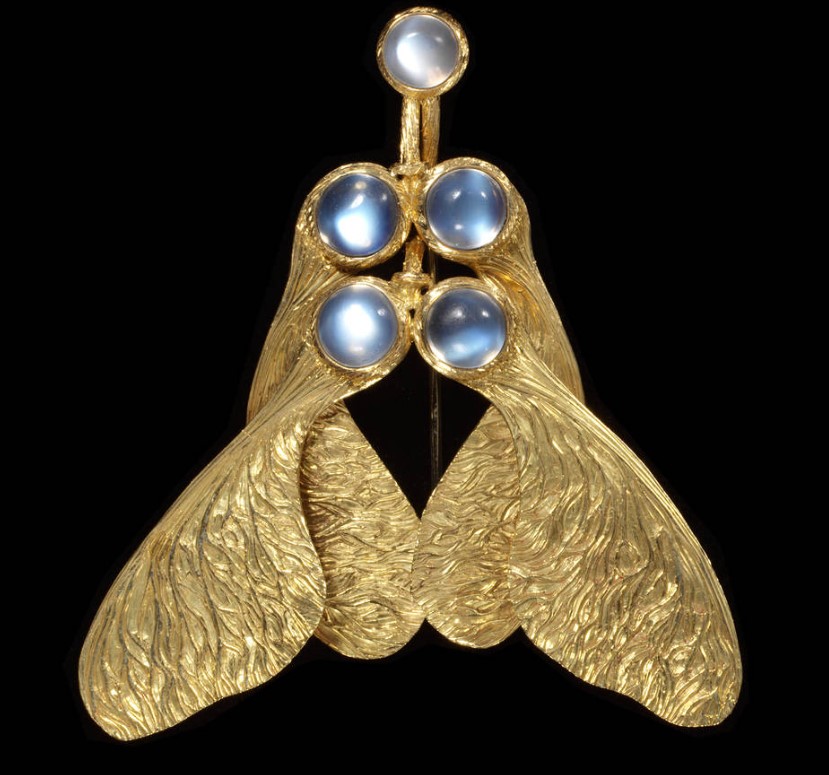
Origins in Ancient Jewelry: The concept of chain jewelry dates back to ancient civilizations like Egypt and Sumer, where it served both decorative and symbolic purposes. The foundational techniques and designs from these eras laid the groundwork for what would evolve into more complex forms like the Cuban Chain.
Cultural and Geographical Journey
- Influence of Various Cultures: Over centuries, chain jewelry was influenced by various cultures, including the Greeks, Romans, and later during the European Renaissance. Each era added its nuances to the design and symbolism of chain jewelry.
- Spanish and Colonial Impact: The Cuban Chain, as we know it today, was significantly influenced by Spanish colonization, particularly in the Caribbean. Spanish goldsmith techniques contributed to the evolution of the chain’s design.
The Craftsmanship: Meticulous Artistry
The creation of a Cuban chain is a testament to the skill and patience of the jeweler. Each link, traditionally oval-shaped and interlocked in a rope pattern, is meticulously crafted and polished, ensuring a smooth, lustrous finish.
The process, often passed down through generations, speaks to the dedication and passion of the artisans who create these masterpieces.
Cultural Significance: More Than Just Jewelry
In the mid-20th century, the Cuban chain gained prominence in American hip-hop culture, symbolizing wealth and success.
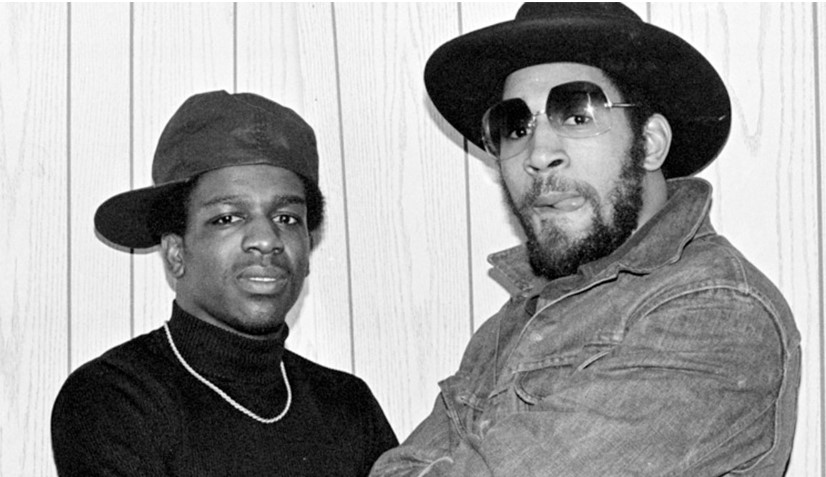
Worn by artists and icons, it became a staple accessory, transcending its ornamental purpose to become a cultural emblem. The chain’s bold presence and undeniable shine mirrored the genre’s own journey and evolution.
Technical Aspects of Chain-Making
- Materials Used: Historically, Cuban chains were primarily made from gold. Over time, other materials like silver, platinum, and stainless steel became popular. The choice of material affects the chain’s weight, durability, and appearance.
- Link Design: The distinctive feature of a Cuban chain is its interlocking pattern. Each link is typically oval-shaped, with a flat or curved surface, allowing it to lie flat against the skin. The links are closely set to create a uniform, continuous chain.
- Craftsmanship Techniques: Traditional methods involve hand-crafting each link, soldering them together, and polishing for a smooth finish. Modern techniques might include machine assistance for uniformity and efficiency, especially in mass production.
Specific Design Evolutions
- Thickness and Length Variations: Originally, Cuban chains were thicker and heavier, signifying wealth and status. Modern designs vary in thickness and length, catering to different aesthetic preferences and comfort levels.
- Diamond-Studded and Embellished Variants: Luxury variants of the Cuban chain emerged, featuring diamonds and other precious stones embedded within the links or along the chain.
- Adaptations for Different Audiences: The design has been adapted to suit various markets, including more delicate versions marketed towards a wider audience, including women and those preferring a subtler look.
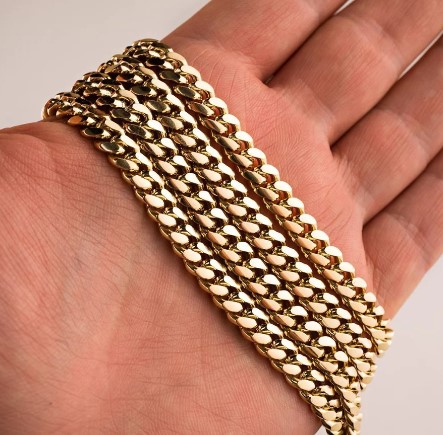
20th Century: The Era of Transformation
- Rise in Cuba: The mid-20th century in Cuba marked the birth of the modern Cuban Chain. Influenced by local art and culture, it adopted a distinct style characterized by thicker, twisted oval links.
- Entry into American Fashion: Post the 1950s, the Cuban Chain gained popularity in the United States, largely due to cultural exchanges and the rise of travel and tourism.
The Hip-Hop Movement
- Symbol of Success and Status: In the 1970s and 1980s, the Cuban Chain became emblematic of success within the burgeoning hip-hop scene in America. It was more than jewelry; it was a statement of achievement, resilience, and identity.
- Mainstream and Global Appeal: By the 1990s, the Cuban Chain had cemented its place not just in hip-hop culture but also in mainstream fashion, transcending cultural and geographical boundaries.
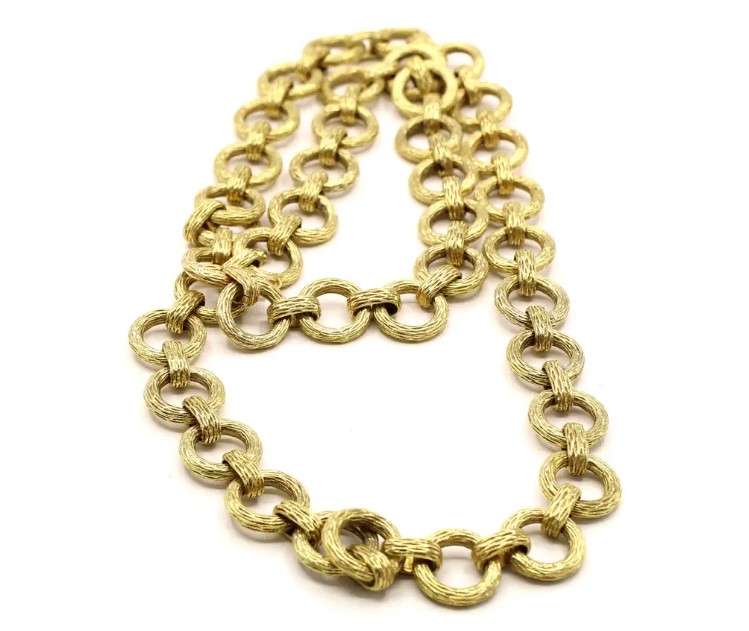
Contemporary Era and Fashion Integration
- High Fashion and Luxury Brands: In the 2000s, luxury fashion brands began incorporating Cuban Chains into their collections, elevating it to a high-fashion accessory.
- Diverse Adaptations: The 21st century saw the Cuban Chain being adapted into various styles, including lightweight, minimalist designs, and lavish, diamond-encrusted versions, appealing to a broader audience.
Technological Impact and Modern Craftsmanship

- Modern Manufacturing Techniques: Advances in technology have transformed how Cuban Chains are made, with precision tools and machinery enabling more intricate and varied designs.
- Sustainable Practices: There’s a growing interest in sustainable and ethical jewelry-making practices, which impacts how Cuban Chains are produced today.
Influence Beyond Fashion
- Cultural Significance: Beyond a fashion piece, the Cuban Chain holds cultural significance in various communities, often representing a connection to heritage and identity.
- Art and Media: Its presence in art, movies, and literature further demonstrates its influence beyond the realms of fashion and jewelry.
Modern Interpretations: A Blend of Tradition and Innovation
Today, the Cuban chain continues to captivate with its timeless allure. From high-end fashion runways to street-style ensembles, it has found its way into various fashion spheres.
Contemporary jewelers, while preserving the traditional craftsmanship, experiment with materials, sizes, and designs, offering a range of styles from the subtle to the statement-making.
Choosing Your Cuban Chain: A Personal Statement
Selecting a Cuban chain is a personal journey. If opting for classic gold, elegant silver, or modern, diamond-studded pieces, each chain tells its own story.
The weight, length, and thickness of the chain can reflect one’s personal style and the statement they wish to make.
Caring for Your Chain: Preserving Its Legacy
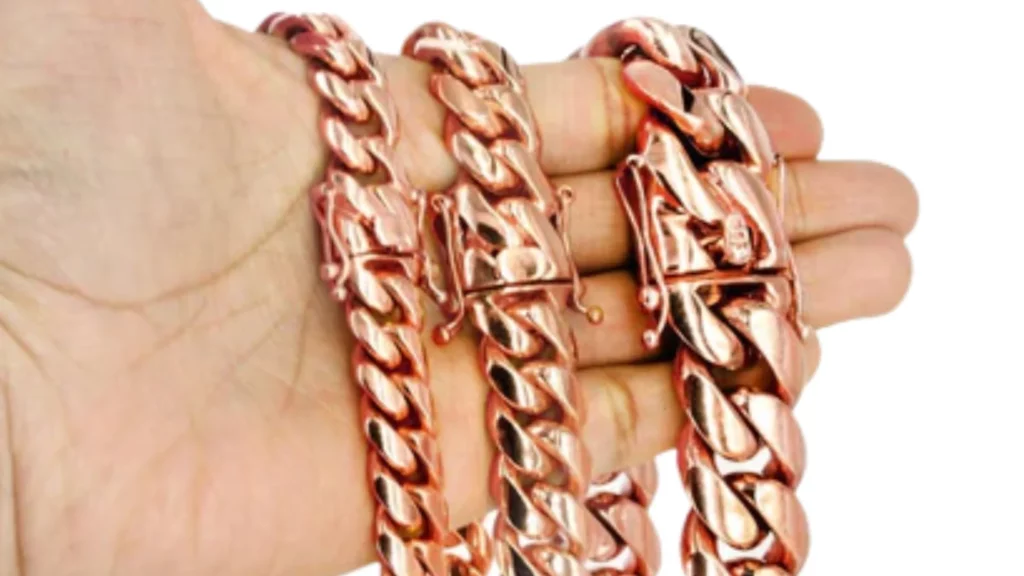
To maintain the Cuban chain’s beauty, proper care is essential. Regular cleaning, safe storage, and mindful wear can preserve its shine and intricacy for years. The chain, like its history, should be cherished and respected.
Conclusion: A Timeless Treasure
The Cuban chain, with its rich history, artistic craftsmanship, and cultural resonance, is more than a piece of jewelry. It’s a symbol of enduring style, a nod to the past, and a testament to the artistry that has spanned civilizations. As it continues to evolve and inspire, the Cuban chain remains a timeless treasure in the world of fashion and jewelry.
- Hip-Hop Culture in the 1980s-1990s: The Cuban chain became a staple in hip-hop fashion, often oversized and gold-plated. It symbolized the success and flamboyance of artists in this era, influencing wider fashion trends.
- Contemporary Fashion: In the 2000s, the Cuban chain transitioned into high fashion, with designers incorporating it into luxury accessories. Its adoption by celebrities further popularized the design among diverse demographics.
- Global Cultural Influence: The Cuban chain’s influence extended beyond the United States, with variations appearing in Europe, Asia, and other regions. It became a global symbol of style and luxury.
- Digital Era and Social Media: The rise of social media influencers and fashion bloggers has given the Cuban chain renewed visibility and popularity, often featured in fashion-forward content online.
FAQs
What makes the Cuban chain unique compared to other chain types?
The Cuban chain is known for its unique interlocking pattern, typically oval links with a flat surface. Its design is both durable and flexible, making it distinct from other chain types.
How has the Cuban chain evolved in its meaning and cultural significance?
Initially a symbol of status and power in ancient civilizations, the Cuban chain evolved into a fashion statement in the 20th century, especially within hip-hop culture. Today, it’s a versatile accessory embraced by various fashion styles.
What are the most popular materials used in making Cuban chains?
Traditionally, Cuban chains were made from gold. However, contemporary designs include silver, platinum, and even stainless steel, often with embellishments like diamonds.
How do I care for and maintain my Cuban chain?
Regular cleaning with a soft cloth, proper storage away from other jewelry to prevent scratching, and avoiding exposure to harsh chemicals will help maintain its shine and quality.
Are Cuban chains suitable for daily wear?
Absolutely! With the introduction of lightweight designs, Cuban chains can be comfortably worn daily. They add a touch of elegance to any outfit, making them a versatile accessory.
